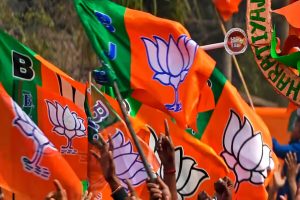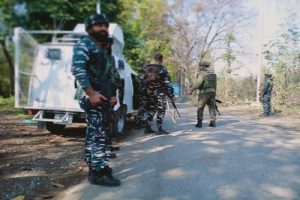The delimitation process in Jammu and Kashmir (J&K), intended to restructure electoral boundaries and enhance political representation, appears to have fallen short of delivering the desired outcomes for the Bharatiya Janata Party (BJP). Despite adding new assembly seats in the Hindu-majority areas of Jammu, the party struggled to make significant gains, echoing its 2014 performance.
This result raises questions about the effectiveness of the delimitation exercise and the broader electoral strategy employed by the BJP in J&K. The BJP’s traditional strongholds in the Hindu belt of Jammu ~ Samba, Udhampur, Jammu, and Kathua ~ benefited from the increased number of assembly segments, but the party’s gains were modest. While it retained dominance in some areas, such as Udhampur and parts of Jammu district, it lost key constituencies like Bani and Chhamb, indicating that delimitation alone could not guarantee a sweeping victory. The BJP’s ability to consolidate its base among Hindu voters, particularly Scheduled Castes, was evident, but beyond these areas, the party’s reach remained limited.

One of the most striking aspects of the election results is the BJP’s failure to expand in the Pir Panjal region and the Chenab Valley, regions with substantial Muslim populations. Despite efforts to appeal to minority groups such as the Paharis and Shias, the party failed to gain traction. The defeat of BJP’s state president, Ravinder Raina, in Rajouri, and its inability to win additional seats in the Chenab Valley, underscore the limits of its appeal in Muslim-majority areas. These results reflect the complex and diverse political landscape in J&K, where regional and religious dynamics play a significant role in shaping voter preferences.
The BJP’s electoral strategy, which has traditionally relied on mobilising Hindu voters and appealing to nationalist sentiments, seems to have hit a ceiling in J&K. The party’s attempts to carve out a broader constituency by appealing to minority groups and promising development did not yield the expected results. This suggests that while the BJP has successfully built a strong base in the Hindu-majority areas, it has struggled to overcome the deep-seated political and social divides in the region. In the broader context, the election results in J&K signal a shift in the region’s political landscape. Voters in J&K appear to be gravitating towards parties that promise a commitment to secularism and regional interests, rather than those pushing for broader national agendas. The National
Conference and other regional parties, which secured wins in both Jammu and Kashmir, highlight the enduring appeal of local politics in the face of national narratives. Ultimately, the delimitation exercise, while increasing the number of seats in key areas, did not significantly alter the political balance in J&K. The BJP’s struggle to expand beyond its traditional strongholds suggests that future electoral success will depend not just on redrawing boundaries, but on bridging the divides that continue to define the region’s complex political landscape.












